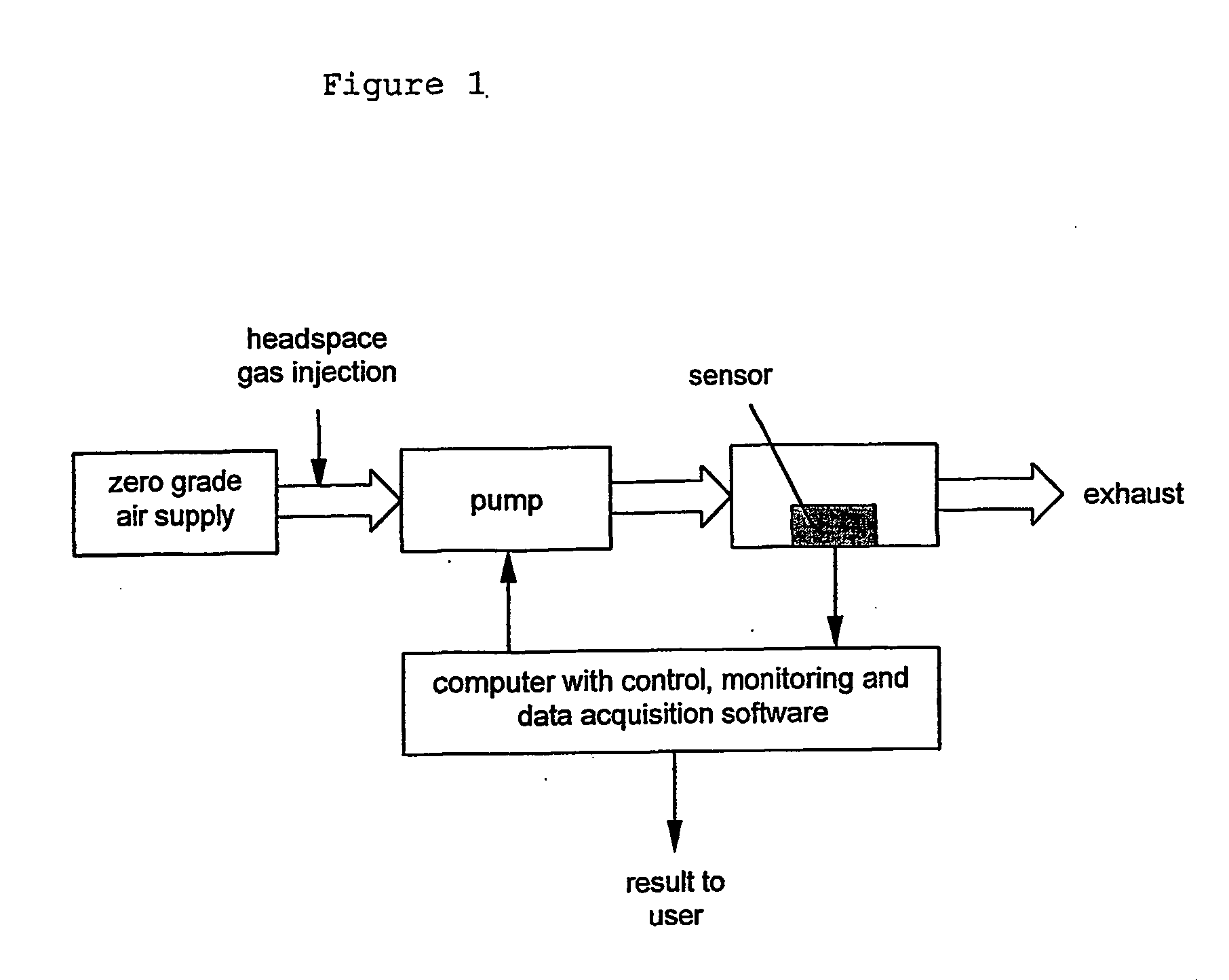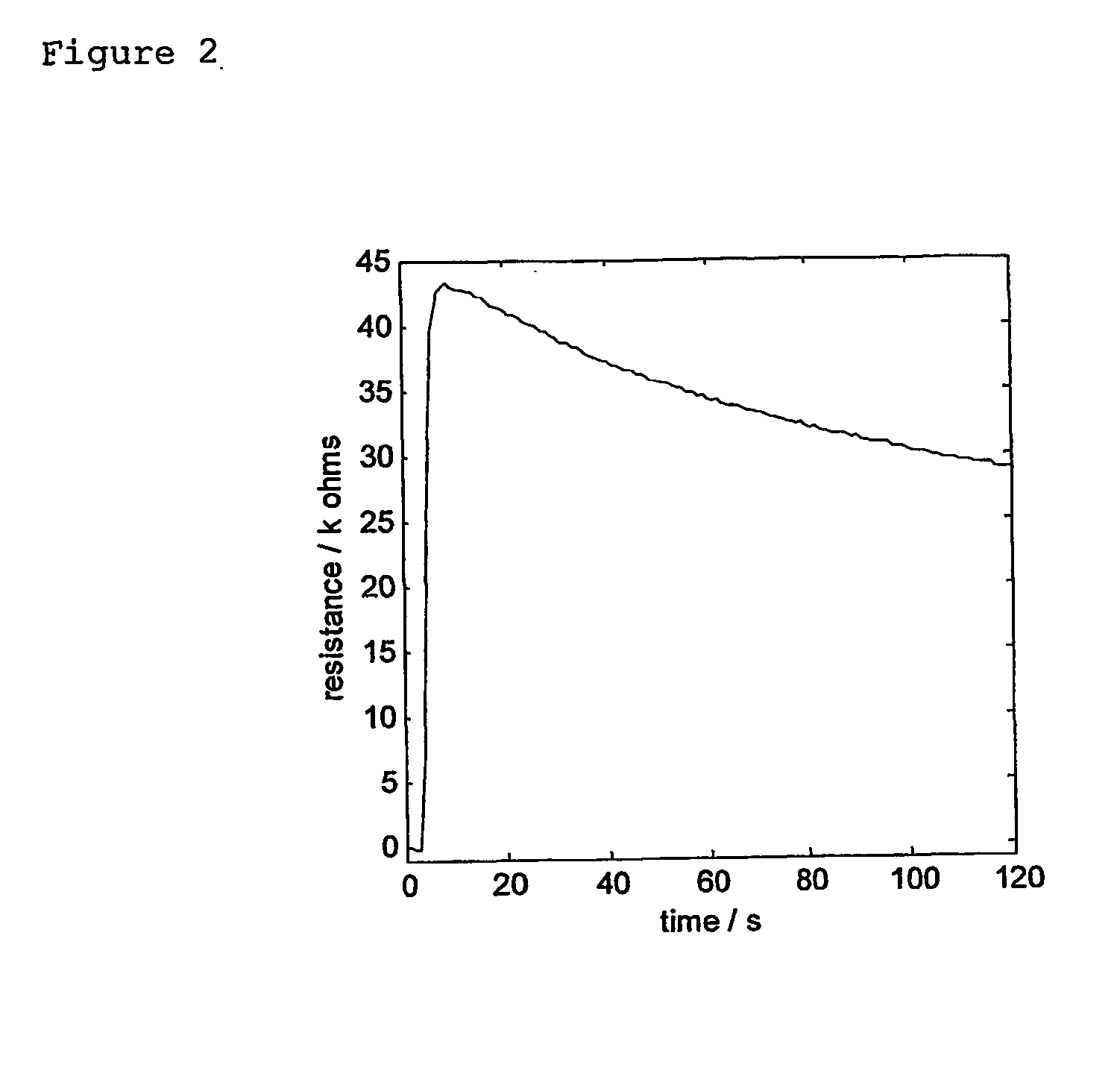Diagnosis by sensing volatile components
- Summary
- Abstract
- Description
- Claims
- Application Information
AI Technical Summary
Benefits of technology
Problems solved by technology
Method used
Image
Examples
Embodiment Construction
[0019] The detector assembly comprises a gas sensor, a means of delivering disease odour samples to the sensor and an electronic interface controlled via a personal computer. The detector is shown schematically in FIG. 1. The single gas sensor used in the detector can be of a variety of materials whose properties change in the presence of disease odours. The response generated therein is recorded by the electronic interface connected to a computer or programmable micro-controller circuit. In contrast to electronic nose detectors, the signal obtained from the detector is from one sensor only as opposed to multiple sensors. By simultaneously considering several aspects of the single sensor response, it is possible to determine if the sample contains disease odours.
[0020] In one embodiment, a metal oxide semi-conductor (MOS) sensor is used. MOS sensors have been widely employed for several gas detection applications and a variety of sensors are available commerciall...
PUM
 Login to View More
Login to View More Abstract
Description
Claims
Application Information
 Login to View More
Login to View More - R&D
- Intellectual Property
- Life Sciences
- Materials
- Tech Scout
- Unparalleled Data Quality
- Higher Quality Content
- 60% Fewer Hallucinations
Browse by: Latest US Patents, China's latest patents, Technical Efficacy Thesaurus, Application Domain, Technology Topic, Popular Technical Reports.
© 2025 PatSnap. All rights reserved.Legal|Privacy policy|Modern Slavery Act Transparency Statement|Sitemap|About US| Contact US: help@patsnap.com



